The world's first movable hotel
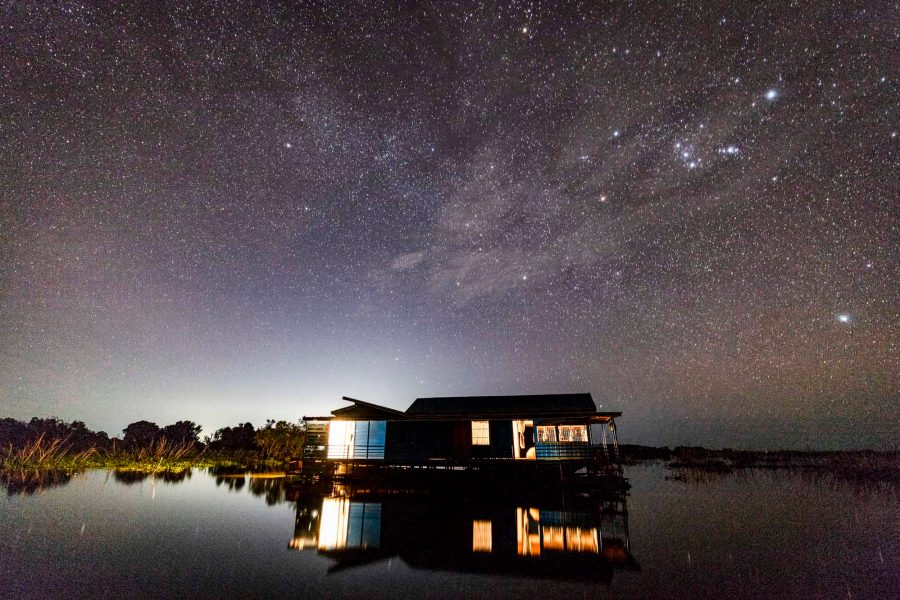
The first time I hope to meet Thierry Teyssier is at Hanchey House in the Siem Reap twilight. I arrive from the airport at the traditional Cambodian home at golden hour, when the structure glows a rich burgundy, and I’m greeted by Margot Durand, my host at the elegantly renovated house. ‘Thierry is at the lake, preparing for your arrival,’ she says. ‘You’ve just missed him.’
The second time I hope to meet Thierry Teyssier is on the banks of the Tonle Sap, the vast lake that’s sometimes described as the heart of Cambodia. We arrive after an hour-long journey from Siem Reap to see him standing in the midday sun on the banks of the water, wearing a light denim shirt and linen trousers. The term ‘silver fox’ comes to mind. ‘It’s a pleasure to meet you, Mark,’ he says, his French accent strong but understandable. ‘Forgive me, but I must head back to Siem Reap. You will love the lake. We will speak tomorrow.’ And like that, he’s gone.
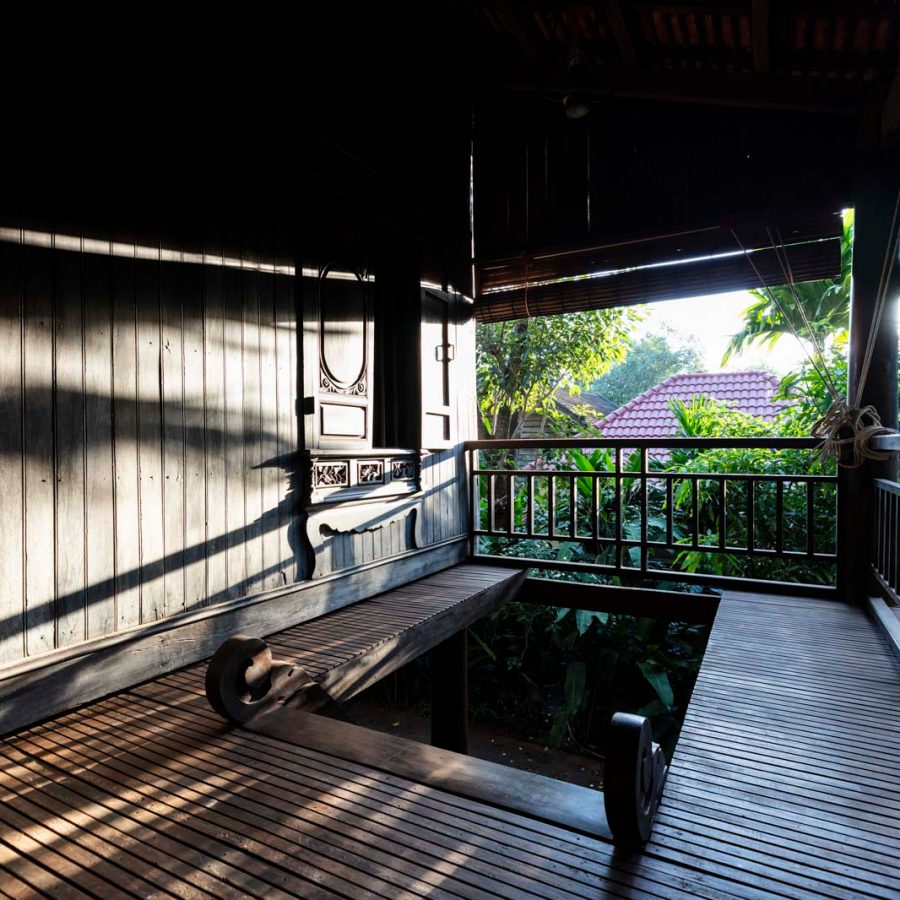
Credit: Mike Pickles
Thierry Teyssier is, it seems, not just a man who’s hard to pin down but a man constantly on the move, appropriate for someone who’s behind the world’s first wandering hotel. Precisely what that means has been playing on my mind: is it a pop-up? Is it glamping? And how does 700’000 heures (meaning hours) – the name of this ambitious project – all work?
I’m here in Siem Reap, the home of Cambodia’s famed Angkor Wat monument, to find out. My understanding thus far is rudimentary: 700’000 heures roams the globe, setting up in a location for several months at a time, never to return. It trialled for two months in Salento, Italy, late last year, but its expedition to the cradle of Khmer culture marks its first real destination. After Siem Reap, it will venture to the spectacular sand-dune lagoons of Brazil’s Lençois, before the beaches of Sri Lanka and Japan.
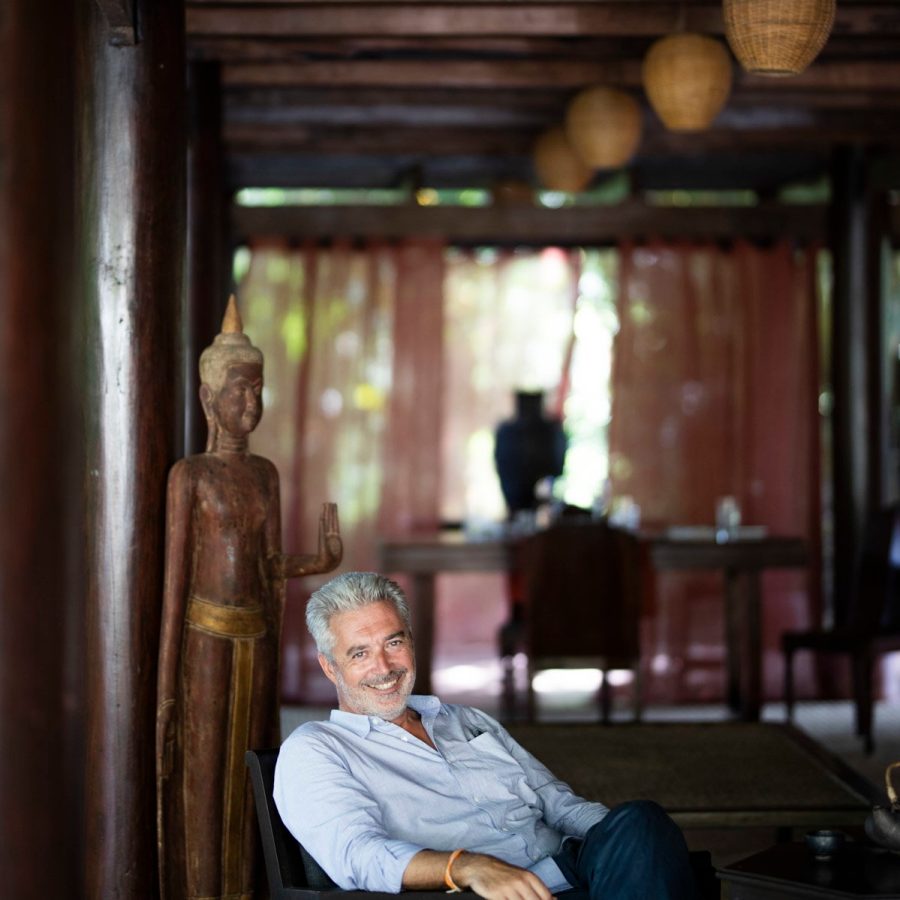
Credit: Mike Pickles
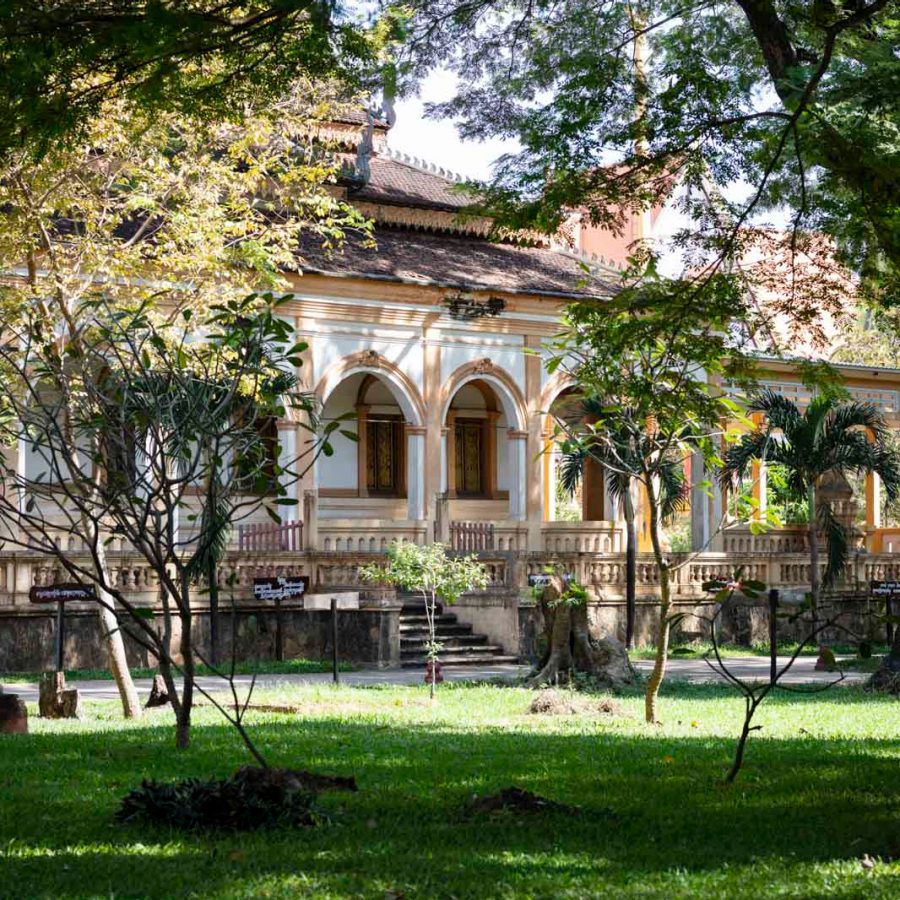
Credit: Mike Pickles
Teyssier has a reputation as something of an enigma in the travel industry. With a background in theatre and event planning, he founded Dar Ahlam , a Moroccan property that has been hailed as a pioneer in experiential travel since its launch more than 20 years ago. There are urban legends of celebrities crying on their departure from the kasbah, so heartbreaking was it to say goodbye. A few things people tell me about Teyssier before we eventually meet: ‘His idea is very special’, ‘Thierry is a genius’, and ‘This is another of Thierry’s crazy ideas’.
The third time I hope to meet Thierry Teyssier is back at Hanchey House on my final full day in Siem Reap. It’s third time lucky. He’s waiting in an antique chair on the open lower floor of the house, a traditional characteristic of Khmer architecture. ‘Setting up a wandering hotel is really not easy,’ he tells me, after the usual formalities.
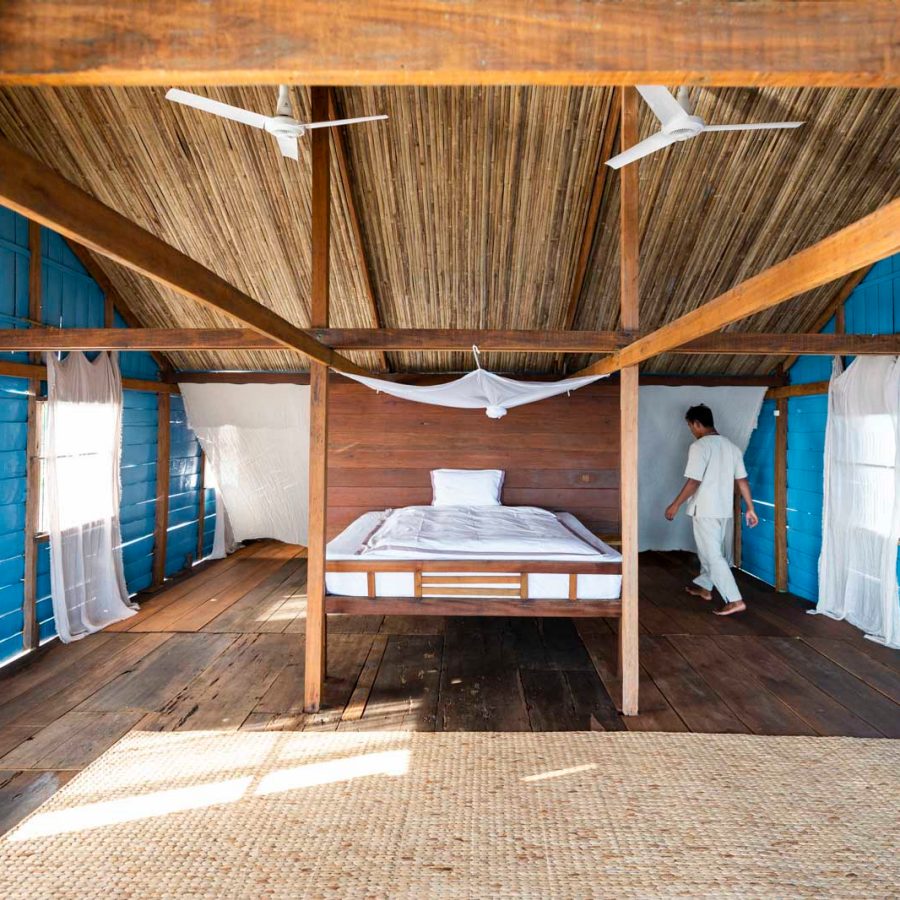
Credit: Mike Pickles
Which raises the question: what is a wandering hotel?
‘The name comes from the average number of hours in a person’s life, and it’s not a pop-up,’ he says, with a tone that conveys a certain disapproval of modern pop-up culture. ‘I want to create things that are linked in different places, but with their own experiences. My message is, instead of us trying to live more and more years, we should add more life in each year. We should enjoy every minute of every day, and create amazing, unique moments with people you love.’
Teyssier’s inspiration for 700’000 heures came from his experience at Dar Ahlam, where he found himself urging his guests not to return. ‘People have an amazing experience there. But if you come back, it won’t be the same. If you come back, maybe you will be afraid to break something – you know, to lose part of your souvenir of the emotion you had for the first time,’ he says. ‘So I thought, what if I create experiences that will never be the same again, without creating a normal hotel.’
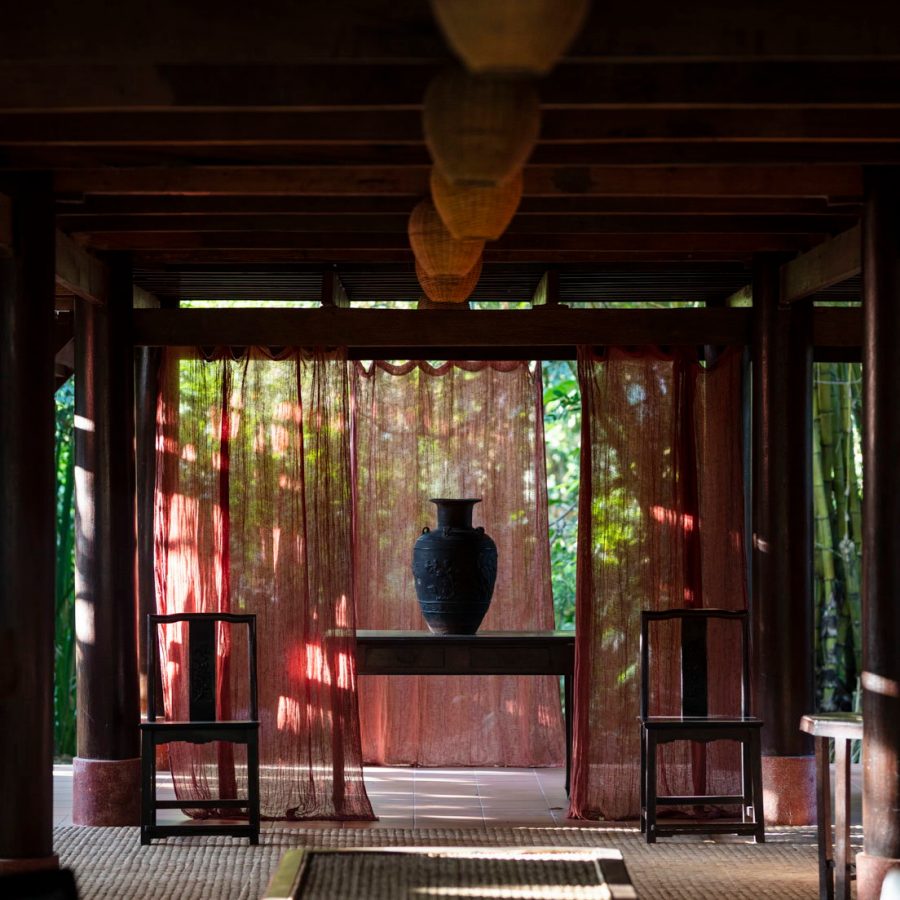
Credit: Mike Pickles
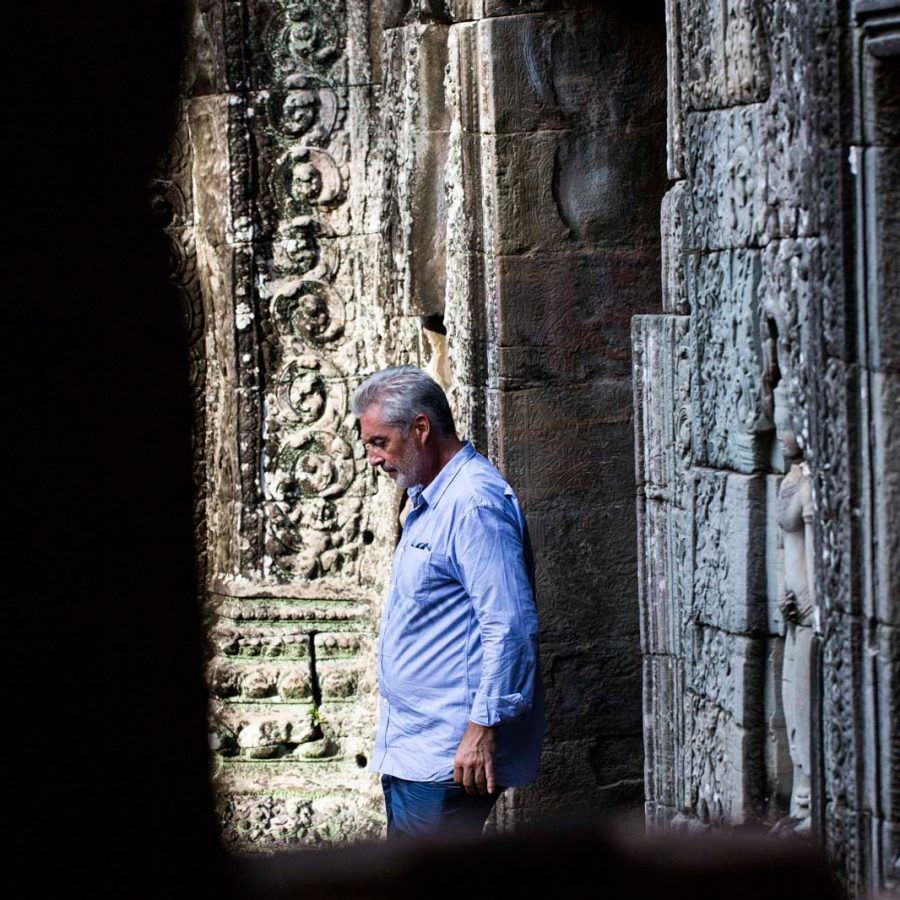
Credit: Mike Pickles
Part of that is in the accommodation. For 700’000 heures, Teyssier aims to use existing houses that reflect their destination, scouting for locations that embody authenticity and provide a unique insight into that place. To staff each destination, he works with local groups that support the underprivileged, providing jobs, training and a foothold in hospitality once 700’000 heures moves to its next location.
‘In the end, I want my guests to experience something real in these places – real houses, real people, real places – not in the way hotels say they do but in a much closer way,’ he says. ‘Nowadays we don’t get many opportunities to do that.’
The Cambodia stop encapsulates 700’000 heures’ approach. Hanchey House, the main accommodation structure, is a century-old Khmer wooden house. Experiences include sleeping in your own private temple, lunches amid the rice fields, close encounters with members of Battambang’s world-renowned Phare Circus and exclusive access to the Conservation D’Angkor, where the real treasures of Angkor Wat are kept (yes, the ones at the temples are largely replicas). It’s all done on request, according to your whims.

Credit: Mike Pickles
But of all the 700’000 heures experiences in Cambodia, spending a night or two on the Tonle Sap lake is the standout. Over an hour in a Khmer boat, you navigate myriad mangroves and trees, passing numerous floating villages that reside on this vast lake, before arriving at a quartet of restored floating houses. Just beyond, there’s a floating platform – one of Teyssier’s crazy ideas – where bean bags, champagne and a spectacular sunset await. There we meet Khunh Siengly, our host on the lake. ‘The houses are from the village just over there, but they were not looking very good,’ says Siengly, a Siem Reap native who helped oversee their restoration. ‘They are the original structures, but we rebuilt and renovated everything in them, with new bamboo roofs and all. It took us almost four months. After, we will return them to the owner and they will have these beautiful new houses.’
Nights here are slow, lonely and entwined with the lake, perhaps like the floating villages we pass on the way. ‘The real experiences, like on the lake, this is my vision of hospitality,’ Teyssier tells me later as we wander through Ta Nei and Banteay Kdei, some of the quieter temples of Angkor. ‘I hope many guests would like to come and experience my vision in different places. I want to say to my guests, “Hey, I’m in Salento or Cambodia or Brazil for a few months; if you want, come to join me”.’
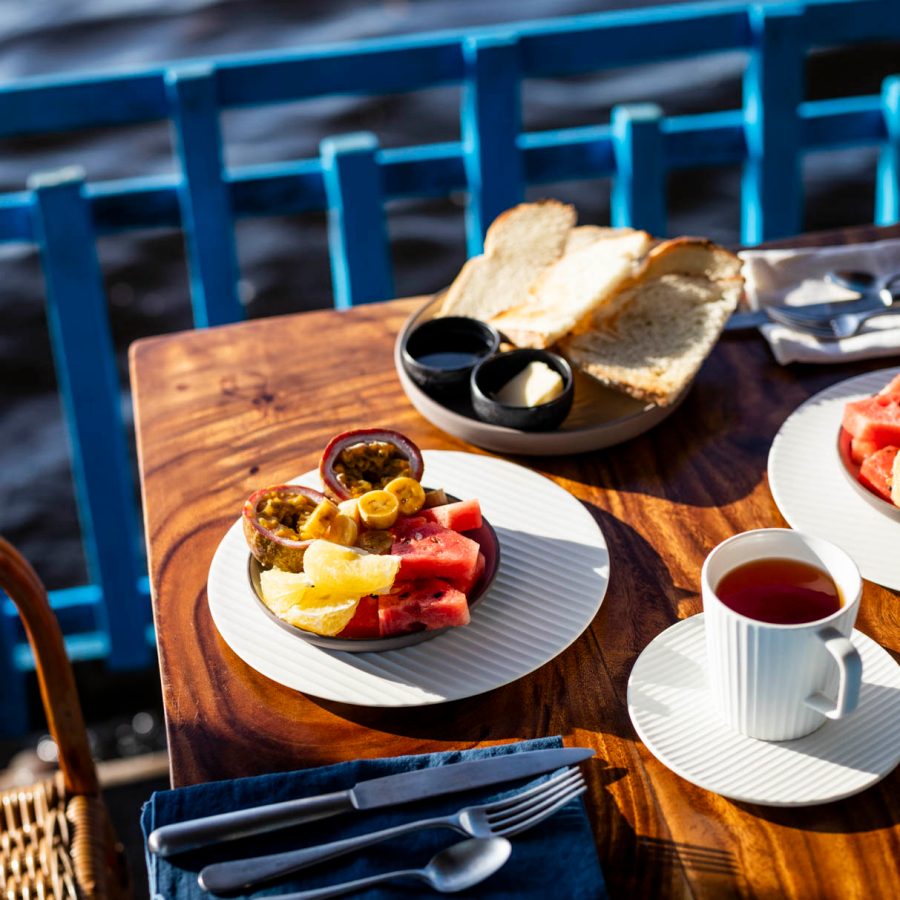
Credit: Mike Pickles
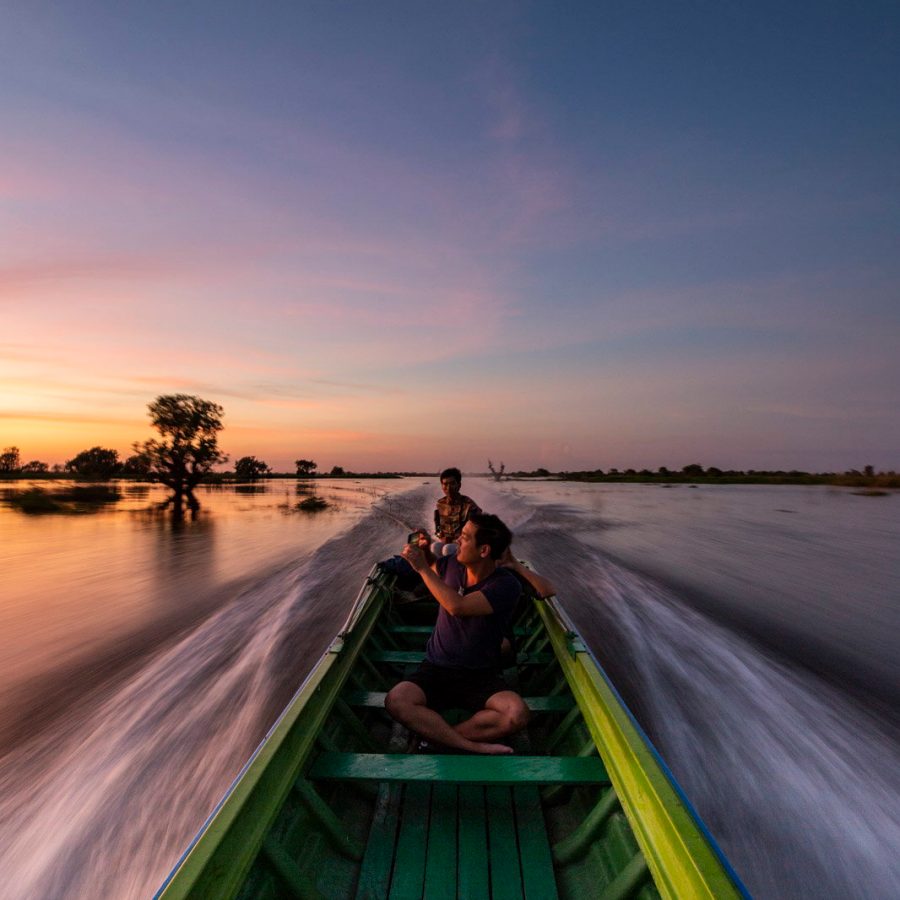
Credit: Mike Pickles
In the end, 700’000 heures is not just the world’s first wandering hotel; it’s an invitation to travel the globe with Teyssier. He says, philosophical as ever: ‘We have just started, so I have nothing to prove that it will work. It may, it may not, but we will see.’
Hero image: Mike Pickles
More inspiration
Siem Reap travel information
- China – the Chinese Mainland, Hong Kong SAR, Macao SAR and Taiwan Region
- Hong Kong SAR - English
- Chinese Mainland (China) - English
- Taiwan, China - English
- 香港特別行政區 - 繁體中文
- 中国內地 - 简体中文
- 中國台灣 - 繁體中文
- Africa
- South Africa - English
- Asia
- Bangladesh - English
- Korea - English
- Singapore - English
- Cambodia - English
- 한국 - 한국어
- Sri Lanka - English
- India - English
- Malaysia - English
- Thailand - English
- Indonesia - English
- Maldives - English
- ประเทศไทย - ภาษาไทย
- Indonesia - Bahasa Indonesia
- Myanmar - English
- Vietnam - English
- Japan - English
- Nepal - English
- Việt Nam - tiếng Việt
- 日本 - 日本語
- Philippines - English
- Australasia
- Australia - English
- New Zealand - English